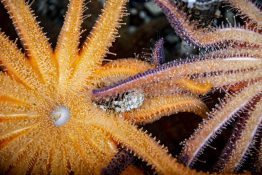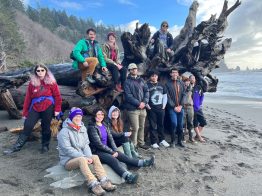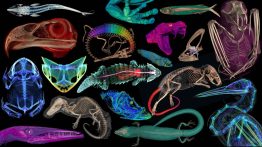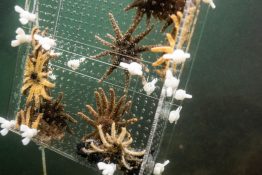In this episode of FieldSound, we take you to UW Friday Harbor Laboratories in the San Juan Islands, where marine researchers Olivia Graham and Joey Ullman prepare for a dive on a cold January morning. They scout sites for deploying juvenile sunflower stars, aiming to compare the survivability of lab-grown versus wild-caught specimens. Fiona Curliss, another researcher, discusses the intricate process of raising these sea stars, from fertilization to adulthood, and the importance of their work in combating sea star wasting syndrome.
Read more »Creating a sense of belonging in the geosciences for UW students
GEODUC and IBIS programs at UW College of the Environment create impact and build community while embracing an evidence-based educational approach to scientific inquiry with nontraditional transfer students.
Read more »Scientists CT-scanned thousands of natural history specimens, which you can access for free
Natural history museums have entered a new stage of discovery and accessibility — one where scientists around the globe and curious folks at home can access valuable museum specimens to study, learn or just be amazed. This new era follows the completion of openVertebrate, or oVert, a five-year collaborative project among 18 institutions, including the UW, to create 3D reconstructions of vertebrate specimens and make them freely available online.
Read more at UW News »Video: Bringing stars back to the sea
At the Friday Harbor Laboratories, recovery is afoot. Scientists at this University of Washington facility in the San Juan Islands are working to help sunflower stars — a type of sea star — grow and thrive once again after their populations along the West Coast were devastated by a mysterious disease. “They’re gone in a lot of places, and a lot of what we’re doing here is testing out ideas for reintroduction,” said Jason Hodin, a researcher at the lab.
Read more at UW News »NBC's 'Wild Kingdom' features sea star rearing lab at UW Friday Harbor Labs
Friday Harbor Laboratories’ sunflower sea star rearing lab recently was featured on the NBC show “Mutual of Omaha’s Wild Kingdom Protecting the Wild.” It's part of an episode on the plight of the Pacific Ocean’s kelp forests — and what’s being done to save them.
Read more »




